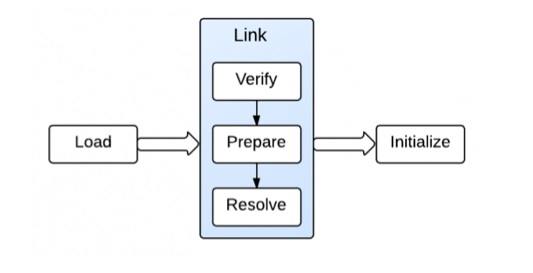Hello world in Java
public class HelloWorld {
public static void main(String[] args) {
System.out.println(“Hello”);
}
}
What does each keyword mean?
public - Should be visible to JVM
class - Everything in java is a an object which is an instance of class
HelloWorld - class name, same as file name if class is public. Only one public class per .java file
static - static means the method is part of class and not it’s instance. If it’s non-static, then instance needs to be created which is not realistic.
void - return type
- main() - program entrance
- String[] - array of strings that can be sent to help with program initialization
Bytecode from javac is not readable
javap -c gives disassembled code
e.g.: javap -classpath . -c HelloWorld
-verbose instead of -c gives more details
Execution
First steps: Load, link, initialize - before executing main method
Load:
Load binaries from class\/interface into JVM
Link:
Incorporate binary type data into run-time state of JVM.
Three steps:
Verification: Verify the structure of class\/interface
Preparation: Allocate memory needed for class\/interface
Resolution: Resolve symbolic references
Initialization:
Assign class variables with proper initial values

Loading:
done by Java classloaders. JVM loads three class loaders when it starts up
Bootstrap class loader: loads core java libraries from \/jre\/lib
Extensions class loader: loads code in extension directories \/jre\/lib\/ext
System class loader: loads code found on CLASSPATH